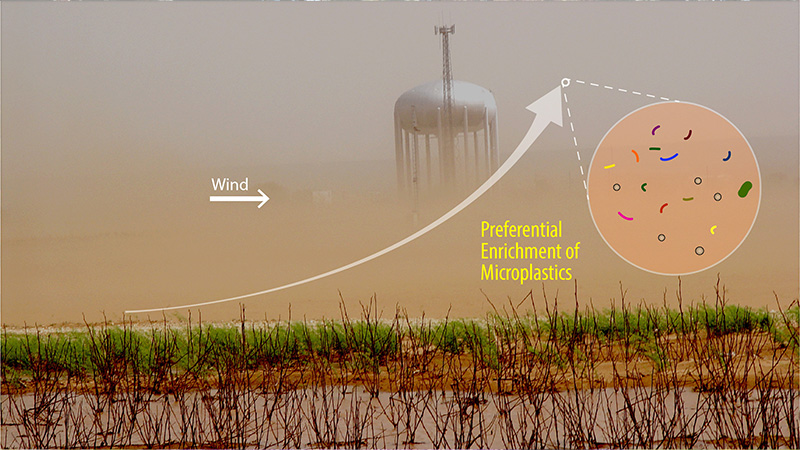UCLA Engineers Find Wind Carries Higher Levels of Microplastics Than Previously Indicated
Study shows how microplastic particles carrying potentially harmful pollutants from wastewater can reenter the environment

Scott Van Pelt/USDA
An image showing dust emissions containing microplastic particles from an agricultural field in Big Spring, Texas
Using treated sewage sludge as fertilizers can help reduce greenhouse gas emissions, but these natural nutrient boosters also contain microplastics — pieces of plastic debris smaller than 5 millimeters in length that can become airborne easily with a gentle breeze.
A research team led by Sanjay Mohanty, an associate professor of civil and environmental engineering at the UCLA Samueli School of Engineering, has discovered new evidence showing that wind carries higher levels of microplastics from wastewater than once thought and can carry pollutants that may be harmful when inhaled.
Published in the American Chemical Society’s Environmental Science & Technology Letters, the UCLA study used portable wind tunnels to collect sediment samples from two agricultural fields in Lind, Washington that are treated with natural sewage solids. The tunnels were able to maintain a 16-meter-per-second wind speed, or slightly more than 35 miles per hour.
“Our study has the potential to help improve the tracking and understanding of microplastic emissions by enhancing models used for environmental or human health risk assessments,” Sanjay Mohanty said.
“Microplastics’ lower density is one reason they are more likely to be picked up and spread by wind than soil particles of the same size,” said Mohanty, who leads the Subsurface Engineering & Analysis Laboratory at UCLA Samueli. “They also have a weaker liquid bridge-bonding potential — a mass of liquid that holds particles together — than soil particles. These two properties make microplastics easier to lift than the soil on which they sit, which results in the increased concentration of microplastics in the wind.”
The team found that microplastics could be transported by weaker winds that cannot carry the soil or dust. Current fertilizer emission models track dust particles, which means they do not account for microplastic emissions that occur without the presence of dust. In their experiments, Mohanty and his team found that microplastics were picked up by wind 269 percent more often than previously predicted.
The research also showed that the smallest microplastic particles, which pose a risk for inhalation, actually need higher wind speeds to become airborne. Because of inter-particle forces that affect them more strongly, these particles are harder for the wind to lift.
“Our study has the potential to help improve the tracking and understanding of microplastic emissions by enhancing models used for environmental or human health risk assessments,” Mohanty said.
The paper’s other authors are UCLA Samueli graduate student Jamie Leonard — a member of Mohanty’s research lab — and Sujith Ravi, an associate professor of earth and environmental science at Temple University.
